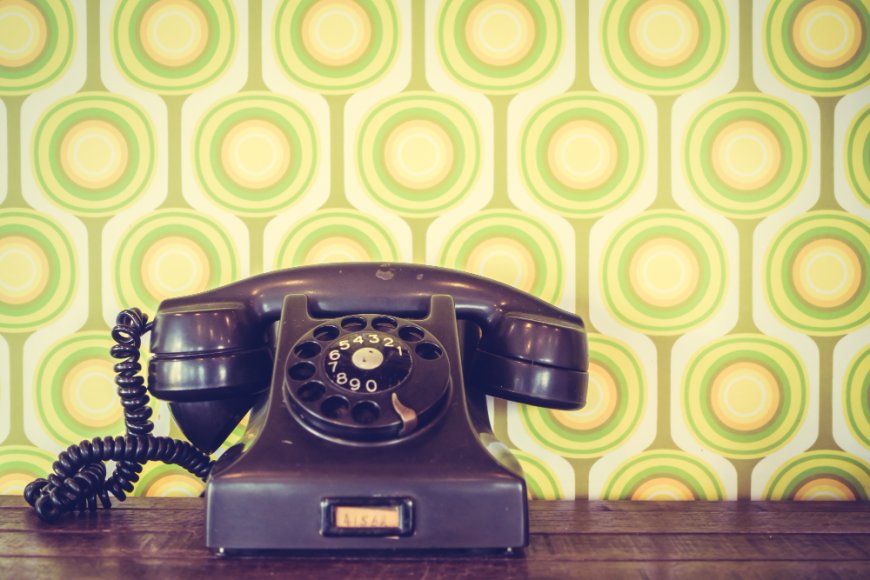Ringing Through Time: The Evolution of the Landline Phone
In an age dominated by smartphones, instant messaging, and voice assistants, it’s easy to forget how far communication has come. Long before we could carry a phone in our pocket, there was a device that revolutionized how people connected—the landline phone. The history of landline phones is not just the story of a single device, but a fascinating chapter in the evolution of communication devices that paved the way for our modern digital world.

In an age dominated by smartphones, instant messaging, and voice assistants, its easy to forget how far communication has come. Long before we could carry a phone in our pocket, there was a device that revolutionized how people connectedthe landline phone. The history of landline phones is not just the story of a single device, but a fascinating chapter in the evolution of communication devices that paved the way for our modern digital world.
The journey from the earliest telephonic experiments to the widespread installation of rotary and touch-tone phones represents over a century of innovation. Understanding the evolution of landline phones helps us appreciate not only how people once communicated, but how these developments influenced today's tech-driven society.
The Birth of the Telephone
The story begins in the 19th century, during a time when the telegraph was the dominant method of long-distance communication. The telegraph allowed people to send coded messages using electrical signals, but it had its limitsit was slow, required trained operators, and couldnt transmit voice.
Enter Alexander Graham Bell, who, in 1876, was awarded the first US patent for the invention of the telephone. His device could convert sound waves into electrical signals and then back into soundessentially allowing people to speak with one another across distances. That year, the first words ever spoken over the phone were: Mr. Watson, come here, I want to see you.
This moment marked a monumental leap in the evolution of communication devices, and laid the foundation for the landline phone as we know it.
Early Landline Phones: The Wall-Mounted Era
In the late 1800s and early 1900s, telephones were large, boxy devices mounted on walls. Users had to crank a handle to generate electricity, and operators manually connected calls through switchboards. Each call required a physical connection, and conversations could only happen if the operator connected the correct wires.
While primitive by todays standards, these phones represented a huge leap forward. Families and businesses began to realize the value of instant voice communication. Telephone networks expanded rapidly in urban areas, and by the early 20th century, the telephone had moved from luxury to utility.
The Rotary Revolution
By the 1920s and 1930s, rotary dial phones began to replace manual switchboards. These devices featured a circular dial with numbered holes. Users would insert their finger into the hole corresponding to the number they wanted to dial and rotate the dial clockwise until it stopped. This mechanical action sent electrical pulses down the line to the exchange, which then routed the call automatically.
This shift was a major milestone in the evolution of landline phones. Rotary phones made communication faster, more efficient, and reduced the need for human operators.
The classic black rotary phone became a household staple in the mid-20th century, and it wasnt just functionalit became iconic. Movies, television shows, and advertisements of the era frequently featured these phones, embedding them in popular culture.
Touch-Tone Phones and the Digital Shift
In 1963, another revolution took place: the introduction of touch-tone dialing. Instead of the rotating dial, phones now featured a keypad with buttons numbered 09. Each button produced a distinct tone when pressed, allowing for quicker, more accurate dialing.
This innovation significantly sped up the process of placing calls and opened the door for automated phone systems, such as voicemail and customer service menus. The evolution of communication devices was picking up speed, and landline phones were adapting to keep up.
Over time, touch-tone phones became sleeker, more colorful, and featured added functionalitysuch as redial, speed dial, and caller ID. The landline phone was no longer just a deviceit was an essential part of home life, business, and global connectivity.
Wireless Landlines: The Cordless Era
The 1980s and 1990s introduced another leap forward: cordless landline phones. These devices allowed users to move freely around their homes while talking, thanks to radio frequency signals connecting the handset to a base unit.
Cordless phones made conversations more comfortable and private, and they began to resemble mobile phones in their convenience. This was a major evolution in both function and form, and it set the stage for the eventual transition to fully mobile cellular technology.
The Digital Age and the Decline of Landlines
As mobile phones became affordable and reliable in the early 2000s, landlines began to decline. Voice-over-IP (VoIP) technology further accelerated this shift, allowing calls to be made over the internet rather than traditional phone lines.
Despite their reduced prominence, landlines still offer several advantages: consistent call quality, reliable emergency access, and independence from battery life. In fact, many rural and older households still maintain a landline as a backup or preferred method of communication.
Nonetheless, the rapid rise of smartphones, video calls, and instant messaging has largely overshadowed the once-revolutionary landline. Yet the history of landline phones remains a cornerstone in the story of how humans have bridged distances with sound.
The Legacy of the Landline Phone
Today, the evolution of landline phones may seem complete, but their impact lives on in every device we use. The foundational technologieswires, switching, signal processingformed the backbone of modern telecommunications. From rotary dials to fiber-optic VoIP systems, each step built on the last.
Even design elements from landlines have been repurposed in mobile phones: contact lists, ringtones, speakerphones, and even the classic phone icon we tap to make a call.
Landlines also influenced behavior. They taught generations how to answer politely, how to leave messages, and how to respect phone etiquette. These habits, though now digital, are rooted in decades of telephone use.
Final Thoughts
The evolution of landline phones is a story of human ingenuity, resilience, and the desire to connect. From Bells first transmission to the cordless phones of the '90s, landlines were at the heart of the communication revolution. They changed how we lived, loved, worked, and experienced the world.
While they may no longer be the centerpiece of communication, the landlines legacy is forever etched into the history of communication devices. Its a reminder that every call we make todaywhether through a smartphone or a smart assistantwas made possible by the humble landline that once rang through time.
















![Top 9 Real Estate Mobile App Developers in Riyadh, Saudi Arabia [2025 Edition]](https://www.biphoo.uk/uploads/images/202507/image_430x256_6879d0d524335.jpg)



















